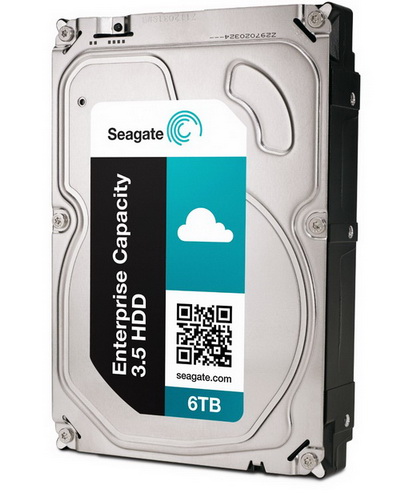INTRODUCTION
Hard disk drive capacities have increased more (skyrocketed is more like it) in the past 5 years than in the 20 years prior and although we've yet to reach the point which I’ve been waiting for (drives exceeding 20TB in capacity) still we do have models with up to a massive 10TB of available space. Of course although not really a surprise such models are usually equipped with SAS connectivity and are primarily aimed towards business users and professionals who require both capacity and performance. Strangely enough however although the new 12Gb/s standard has been around for quite some time now we haven't really seen many models take that step so most in the market still support the previous generation 6Gb/s standard. Today we will be putting through our usual tests one of the latest HDDs to hit the market by our friends over at Seagate, the Enterprise Capacity 3.5 V4 6TB SAS 12Gb/s (ST6000NM0034) model.
Founded in 1979, Seagate is the leading provider of hard drives and storage solutions. From the videos, music and documents we share with friends and family on social networks, to servers that form the backbone of enterprise data centers and cloud-based computing, to desktop and notebook computers that fuel our personal productivity, Seagate products help more people store, share and protect their valuable digital content. Seagate offers the industry’s broadest portfolio of hard disk drives, solid-state drives and solid-state hybrid drives. In addition, the company offers an extensive line of retail storage products for consumers and small businesses, along with data-recovery services for any brand of hard drive and digital media type. Seagate employs more than 50,000 people around the world.
Having already reviewed the Seagate Enterprise Capacity 3.5 V4 6TB SATA model we know that it's nearly identical to its SAS brother since both rotate at 7200RPM, share the same average seek time of 4.16ms, have 128MB of cache memory, support PowerChoice technology, have an MTBF of 1.4 million hours and are covered by the same 5 year warranty. However these two models do have their differences so whereas the SATA model can achieve a max sustained transfer speed of 216MB/s the SAS 12Gb/s variant can go up to 226MB/s. That's not all however so the SAS model also supports improved data integrity via T10 DIF (data integrity field) a technology which basically adds a total of 8 bytes of protection data per sector (extends the usual 512 bytes to 520 bytes). On paper the SAS 12Gb/s model seems to be ahead compared to its SATA III brother so let's find out.

 O-Sense
O-Sense








.png)

